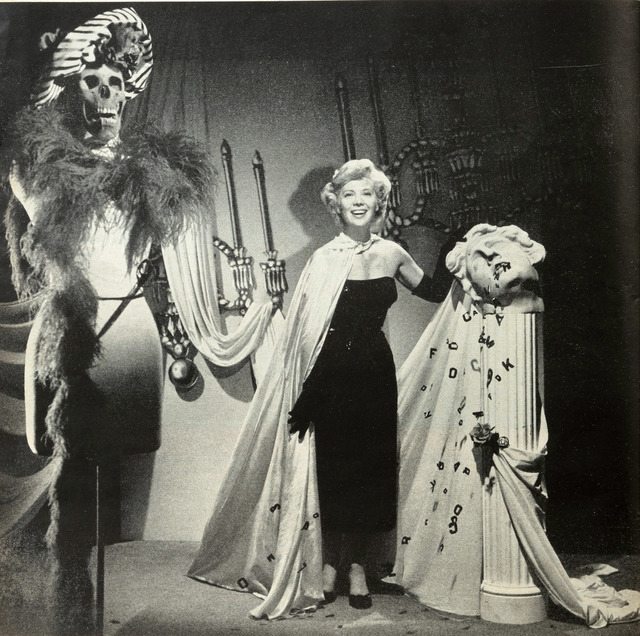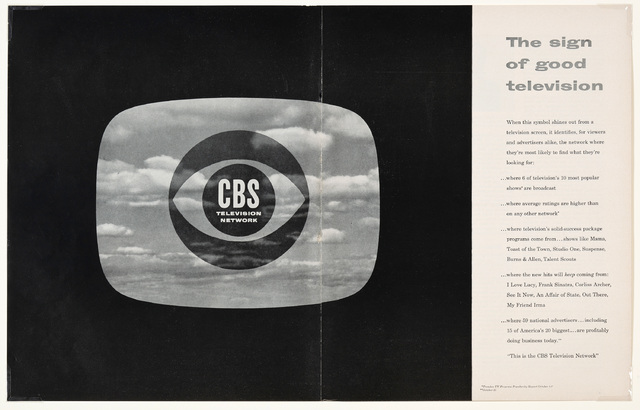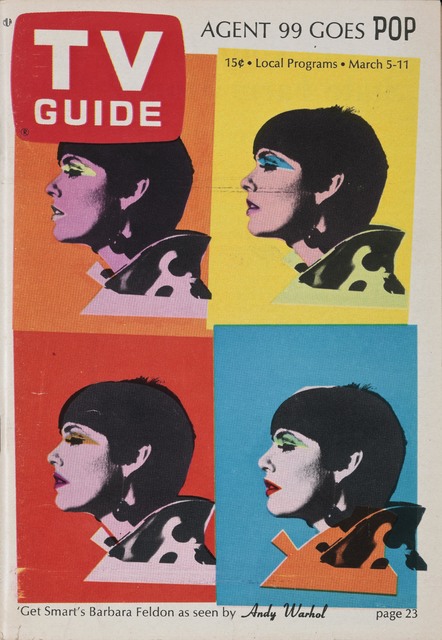Revolution of the Eye: Museum show takes on art, early TV
NEW YORK — From Salvador Dali’s turn on “What’s My Line?” to a dreamy, cherry-topped ice cream sundae thought up by Andy Warhol for a restaurant commercial, modern art indelibly influenced early television.
ADVERTISING
In a new exhibit, “Revolution of the Eye,” the Jewish Museum and its curator, Maurice Berger, travel back to the birth of TV, delving into most every crevice for connections to the art world through more than 260 objects, artifacts and clips.
There’s innovator Rod Serling, who clashed often with network executives over “The Twilight Zone,” Bruce Wayne and Dick Grayson — aka Batman and Robin — debating the elitism of the avant-garde on “Batman,” and the iconic eye logo of CBS, inspired by the hex symbol on Shaker barns.
They’re joined by “Winky Dink and You,” the CBS Saturday morning show that had kids drawing on TV screens via vinyl transparencies in the first ingenious attempt at interactivity in 1953. And there’s Barbra Streisand romping through the Philadelphia Museum of Art in a CBS musical special that showed off the network’s new all-color, prime-time lineup in 1966.
“It’s an excited, open, anything-goes moment that allowed these two communities to come together,” Berger said Tuesday during a media preview ahead of the exhibit’s Friday opening.
“In early television, in the ’50s and ’60s, there were no conventions. The remarkable thing is that the lack of conventions meant that smart people could hire smart artists and designers and get away with a lot,” he said.
Nobody tried harder than Ernie Kovacs, an early television gadfly who pushed boundaries as a comedian, actor, writer and producer. The mustachioed Kovacs once staged “Swan Lake” with dancers in gorilla costumes and published a novel, “Zoomar,” in 1957 about a broadcast executive’s descent into insanity.
He wasn’t alone in both mocking and embracing contemporary art genres, from surrealism and dadaism to op and pop, said Berger, a research professor at the Center for Art, Design and Visual Culture at the University of Maryland, Baltimore County.
“I think that ‘Batman’ is the perfect example of the ambivalent relationship of mainstream culture to modern art and to the avant-garde,” he said. “The producers and writers and directors of American television were not unaware of the prevailing view that television was purveying schlock, that television was not as good as film, that television was not an art form.”
That, Berger said, led the smartest among them to look to “serious art as an influence in order to remind the public that TV was a medium that was trying, that it was pushing the envelope. But at the same time, I think, there was always a fear that if you got too elitist you would go over the heads of the American public.”
In addition to fictional, quiz and variety shows, much of the pushing and experimenting came in commercials.
Warhol created his sundae with “groovy scoops” for the New York restaurant chain Schrafft’s. He also turned Barbara Feldon of “Get Smart” into four bright silhouettes on the cover of TV Guide in 1966.
Cartoonist Jules Feiffer came up with a suffering stick figure of a man and his disembodied head for Alka-Seltzer in 1967 and New York’s Metropolitan Museum of Art had a hand as early as 1941 in producing experimental programs that introduced its collections to a local audience on the city’s CBS affiliate.
Behind it all, through much of the 20th century in Europe and the United States, were Jewish artists, designers, filmmakers, scholars, critics and performers shaping modern culture and TV simultaneously. Among them: Saul Bass, Roy Lichtenstein, Groucho Marx, Man Ray, Aline B. Saarinen and William S. Paley himself, the founder and president of CBS, an avid art collector who served on the board of the Museum of Modern Art for half a century.
Saarinen, the daughter of amateur painters who took her on European art tours as a child, frequently examined the relationship between art and society as a critic for The New York Times. She was also known for her work on NBC News and “Today,” interviewing modern artists, critiquing modern architecture and introducing new ideas in stylish, cinematic on-location segments that covered Georgia O’Keeffe, Edward Hopper and the Pan Am Building in New York. She rebuffed the latter.
“When she appeared as a guest on the ‘Today’ show in 1964, 600 viewers wrote in, ‘We love this woman. She has to stay on television,’” Berger said. “She was able to make O’Keeffe and Alberto Giacometti comprehensible.”
As viewer-friendly as Saarinen was, Serling and Kovacs routinely fought the networks, Berger said. For Serling, conflict often came over the surreal nature of “The Twilight Zone,” which ran on CBS from 1959 to 1964.
The show’s references to art were there for the taking: a white door in the title sequence from Season Four in 1963 and its harkening to Rene Magritte’s 1939 oil on canvas, “The Victory,” for example.
Another Magritte painting, “The Lovers” from 1928, shows an embracing couple with cloth wrapped around their heads. Season Two of “The Twilight Zone” in 1960 included an episode titled “The Eye of the Beholder,” with a patient’s head fully masked by bandages.
“It is quintessentially a surrealist’s dream, but it’s a surrealist’s dream for a Cold War moment,” Berger said of Serling’s groundbreaking, eerie series. “It’s not the surrealism of Man Ray or Duchamp of the 1920s. It’s a surrealism of post-war America, of the jitteriness, of the anxieties.”
He believes Serling’s creation and the many television works of Kovacs on various networks, captured a culture in flux.
“They are on a par with some of the great avant-garde filmmakers of the time,” Berger said. “They showed that the possibilities were really quite endless.”





